During tumultuous times like these, it’s important to know how to properly disinfect your home. Most of us are practicing social distancing and limiting our contact with the outside world. But there are others, such as doctors, public health workers, and more, who cannot do that. Bacteria is sneaky; it finds its way into spaces around us easily. And in times like these, that’s the last thing we want – especially if we have kids or elderly relatives around. Remember, people may be asymptomatic – you may have the virus but not show nay symptoms.
Whether you’re one of those people who still make contact with people on a daily basis because of your job, or you just want to give the bacteria in your home an extra beating, this is for you. Here are some great ways of properly disinfecting your home.
We’ve written other useful and easy to follow articles related to helping you prevent falling victim to COVID-19. Here’s a guide on the Coronavirus including some essential information. If you’re want to know how to get your house Coronavirus ready, click here. We also have an article on how you can preserve food (and money) during the pandemic. Read that one here.
Important Definitions
Cleaning, sanitizing, and disinfecting are often used interchangeably. But they’re not the same thing. They are all ways of removing bacteria from our home but at very different levels.
Cleaning is the first level. Note that cleaning does not kill germs, but it dilutes the numbers by removing bacteria with soap and water and lowers the risk of spreading infection.
Sanitizing is what we do to kill a certain amount of disease-causing microorganisms on our surfaces. That level of anti-bacteria properties are set by public health authorities. Sanitizers are made to keep us healthy when we’re out and about which is why you find them in many public spaces, such as restaurants. Sanitizing reduces, not kills, the number and growth of bacteria, viruses, and fungi.
Disinfecting is when the goal is to get rid of all disease-causing microorganisms on a surface using a disinfectant. This could be a chemical, method, or heat to get rid of bacteria.
When should I clean, sanitize, or disinfect?
Cleaning should be something we all do on a regular basis. Wiping away small spills or grease with soap and water reduces the growth of potentially harmful bacteria. It also helps you protect your belongings. This is a crucial step when you want to fully disinfect your home. If you prefer making your own cleaners, check out our comprehensive guide to make your own cleaning products for your home.
According to the spruce, you should sanitize all communal surfaces. These would be your light switches, countertops, touch-pads, and ‘any surface that comes into contact with bodily fluids’. But according to Melissa Maker on Clean My Space on Youtube, these surfaces shouldn’t just be sanitized, but disinfected.
Maybe sanitizing would be fine on an average day, but with COVID-19 going around as rapid as it is, we shouldn’t take any chances. If you have an area or objects where a high level of bacteria is being exchanged, you’re gonna want to disinfect it. Maker recommends you disinfect any time you use in meal prepping as well, especially when prepping meat.
Other times to disinfect are when you, a family member, or any person entering your house is sick. This also applies if there’s anyone in your home who’s is immunocompromised, or has a chronic health condition. This is when you seriously want to make sure you disinfect your home well because bacteria is not good for their system. We think this goes without saying, but we’re putting it in here anyway.
Don’t disinfect like mad, though
Don’t switch out your regular spring-cleaning for regular spring-disinfecting.
For the rest of us who are well, day-to-day cleaning will suffice. Disinfect your home enough, but not too regularly. Regular bacteria is good to build our immune system. If someone contracts a cold or flu, that’s when you want to amp it up, and begin disinfecting.
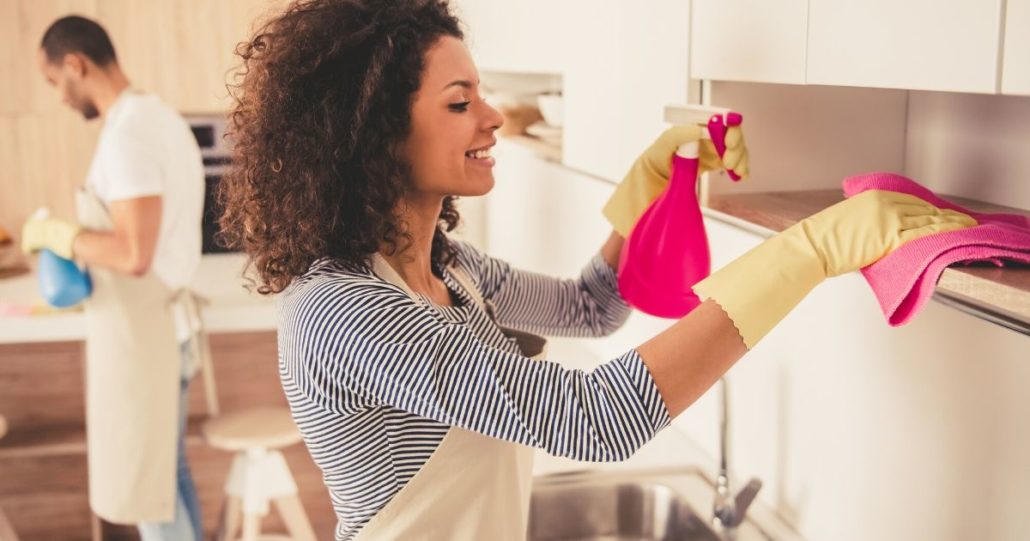
Safety First
Before you go and clear out the entire cleaning section at Pama, we recommend you consider this. The Spruce strongly advises that you don’t mix strong chemicals when cleaning. Chlorine bleach is an excellent disinfectant, and Ammonia is a great cleaner, but when mixed together they become deadly! A cocktail of the two can produce a gas that can result in lung damage or even death.
Always make sure you have adequate ventilation when using any type of cleaning product. Also, remember to wear protective eye-goggles when using strong chemicals (your beach goggles are good enough). Remember to wash your hands after using these types of cleaning products too.
Tips for disinfecting a surface
It’s important to disinfect your home, but it’s useless unless you’re doing it right. Here is some advice:
1. The Two-Step Disinfecting method
According to Melissa Maker, it is SUPER important to clean a surface before you disinfect it. It’s not enough to just hit a spot with a mighty ton of disinfectant. It’s all for nothing unless you clean the area first. This is because disinfectants aren’t designed to clean. They are only designed to kill microorganisms.
This method is actually recommended by the CDC (Centre of Disease Control and Prevention).
So, when you’re applying disinfectant stop yourself, and ask yourself if you’ve cleaned that area first. In the case of meat juice on the counter Maker explains:
- First, blot the area with a disposable paper towel and toss that away
- Spray the area with a general-purpose cleaner (like soap and water)
- Wipe that away with another paper towel
- Apply the disinfectant
2. Dwell Time
A lot of cleaning experts know about ‘dwell time’, and probably you already do it. But for those who don’t know about it, dwell time is the time a product needs to sit wet on a surface for it to remove bacteria. This takes usually 4-10 minutes. Think of it as allowing the product time enough to search for and kill the bacteria.
Also, you must use a sufficient amount to keep the surface wet for that entire time and then allow the surface to air-dry.
You’re probably used to seeing people in commercials swiping away the disinfectant just after using it. This is misleading. Some disinfectants only work well if allowed to sit on a surface for a few minutes before being wiped off. Read the package instructions, or go to the products’ website – they’ll probably tell you just this.
Remember, just because you’re using the product, doesn’t mean you’re disinfecting. You need to use the product properly. Think of it as allowing the product time enough to search for and kill the bacteria.
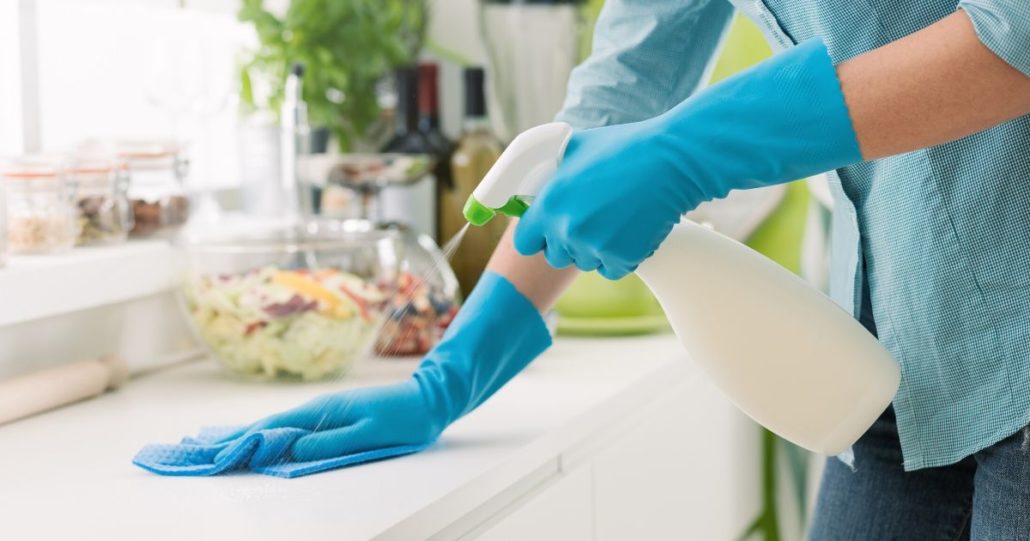
3. Disinfectant Wipes
After the rampage that has happened to many supermarkets running out of wipes, we feel we need to say this: disinfectant wipes disinfect; Baby and make-up wipes, don’t.
You’ll probably notice that when you pull a disinfectant wipe out of the container, they’re soaking wet. This is vital! You want them to be wet. According to Maker, if the disinfectant wipe isn’t wet, it’s not going to be able to search and kill for bacteria.
4. Steam
Steam is a great way to kill bacteria! If your steam cleaner can get to 100°C (212°F) at the tip/ nozzle, it will kill bacteria pretty much on contact. You can use a steam cleaner on hard surfaces, like kitchen counters, or soft surfaces, like pillows. They’re pricey, but they’re an investment! They really come in handy in times like this, especially if you’re the kind of consumer who doesn’t like to bring in too many products into the home.
Where should I disinfect?
1. Points of contact
Focus on parts of the house which is constantly being touched – by you, your family, whomever. On a surface that’s regularly being touched, bacteria can be exchanged from person to person. Things that are frequently touched or used are going to be carriers for germs. So, door handles/ knockers, toilet flushers, light switch plates, faucet handles, key-pads or locks, anything that we’re constantly touching.
This includes technology, like phones and laptops. These need to be attended to as well. You can use disinfecting wipes on these.
The CDC recommends you clean and disinfects points of contact at least twice daily.
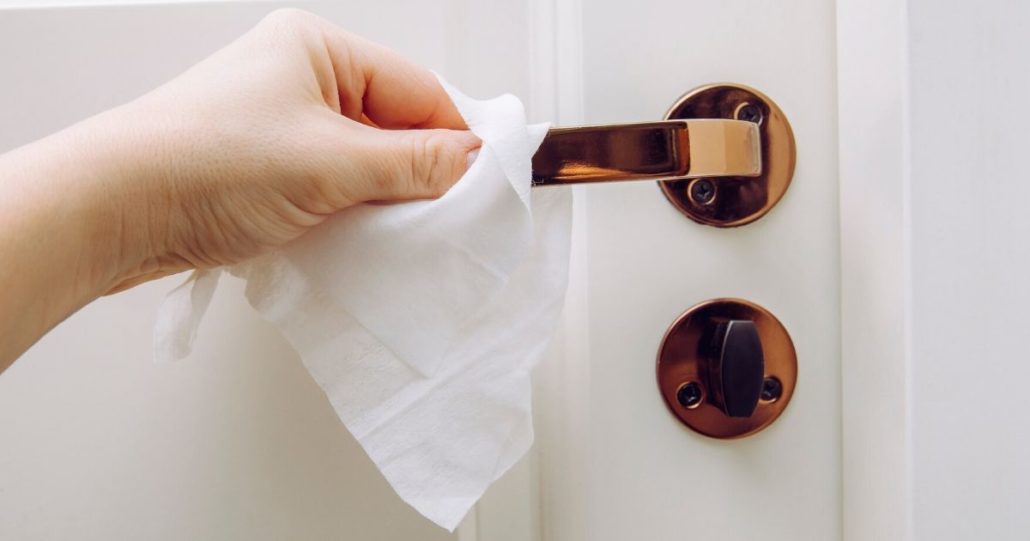
2. Bathrooms
Be it hard surfaces, or soft (like towels, rugs, etc.), these things can easily pick up bacteria. If there is a room you had to disinfect the most, it’s the bathroom.
3. Your Washing Load
If your washer has a sanitize cycle, i.e: it washes clothes with super hot water, this is a great way to remove bacteria from clothes, towels and bedding. If there’s any blood, vomit, or other undesirable things on your clothes or bedding, just pre-soak them in oxygen bleach powder before putting them into the washing machine.
According to the CDC, you shouldn’t shake dirty laundry. This may sound strange, but it’s coming directly out of the experts themselves.
If possible, do not shake dirty laundry. This will minimize the possibility of dispersing virus through the air.
cdc.gov
If possible, wash everything in hot water to kill bacteria.
Tip: If you’re washing bedding after someone has just gotten over a cold/ flu, let the mattress air out while the sheets are in the washing machine.
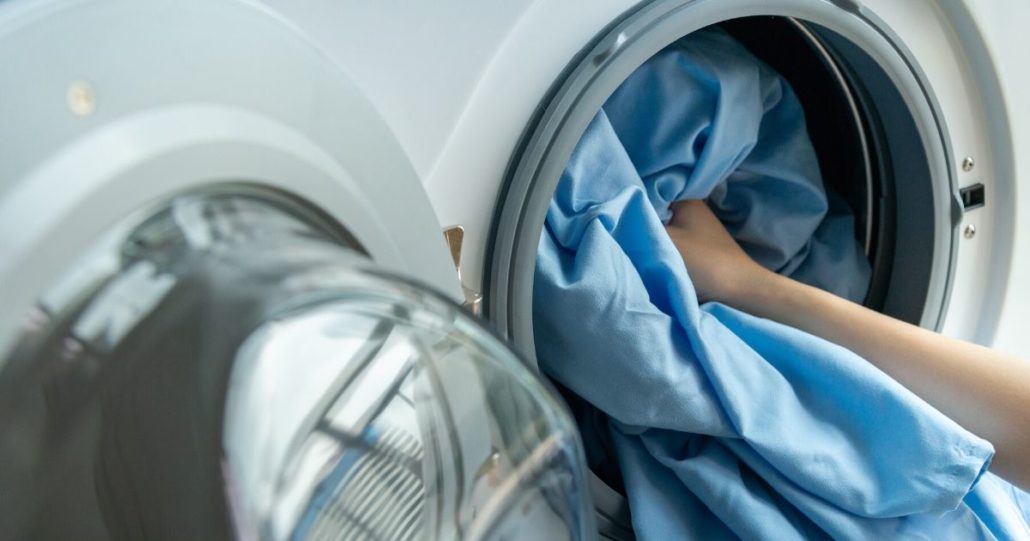
So there you go! Disinfect your home with confidence. Cleaning helps us gain a little bit of control over our lives – especially when an outbreak like COVID-19 is afoot. And it gives us something productive to do while we’re stuck inside all day. As always, keep safe!

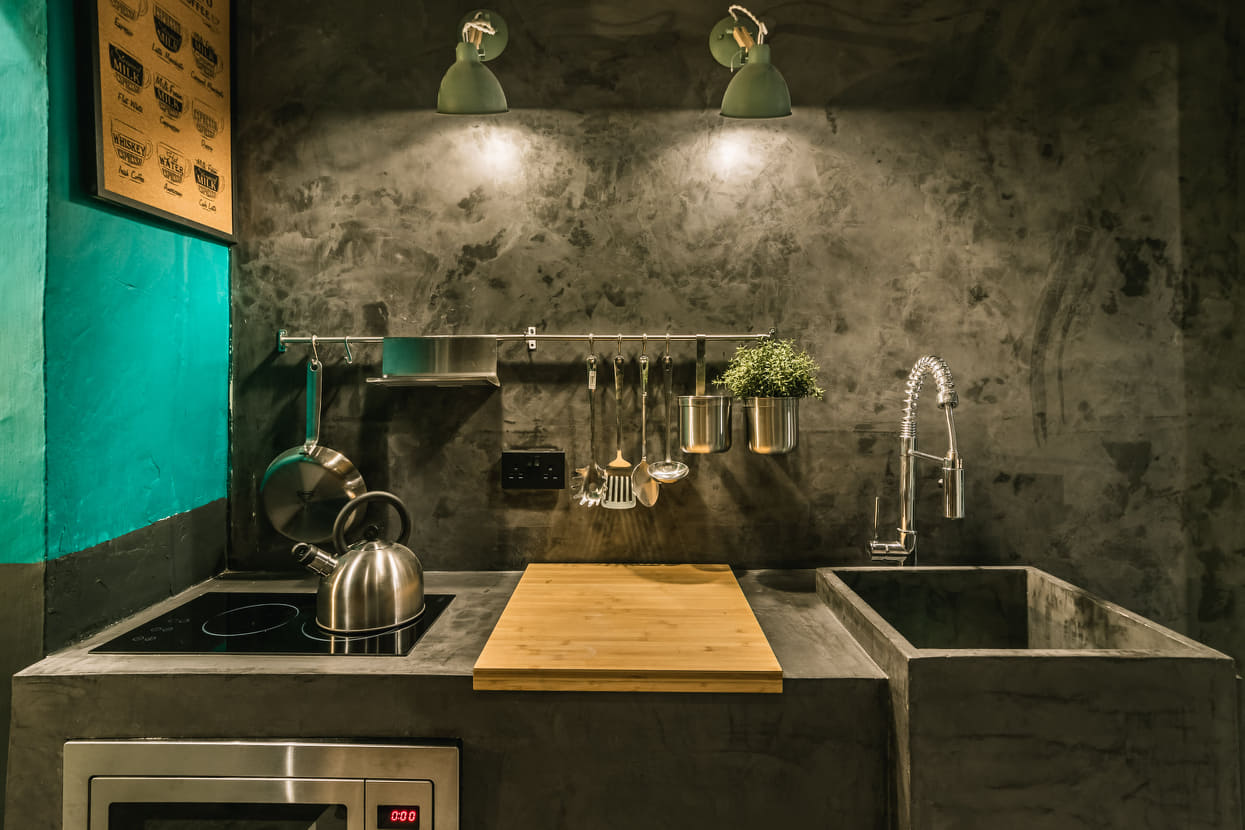

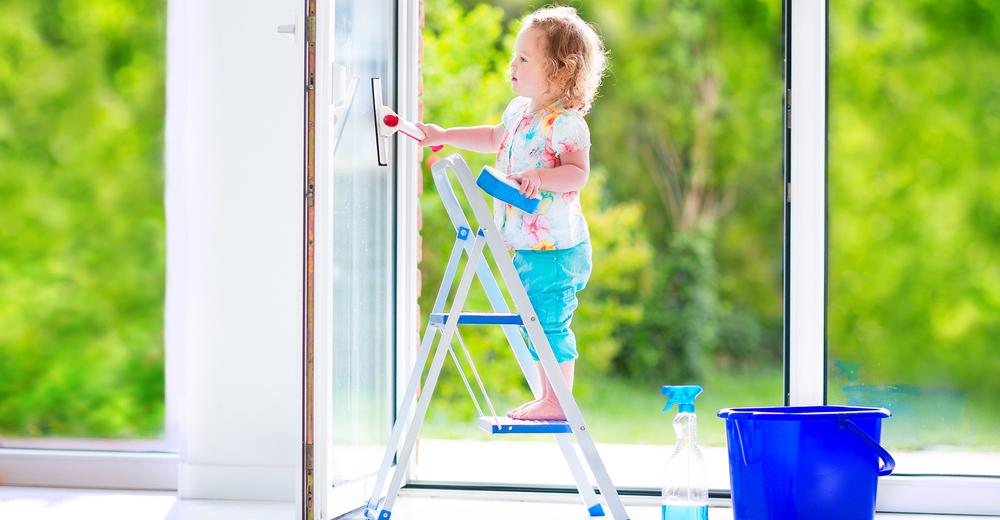

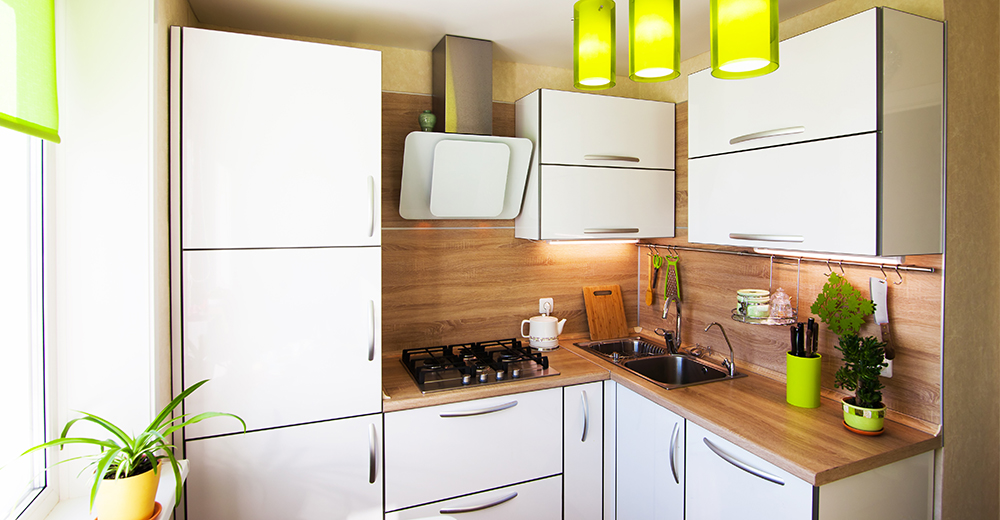





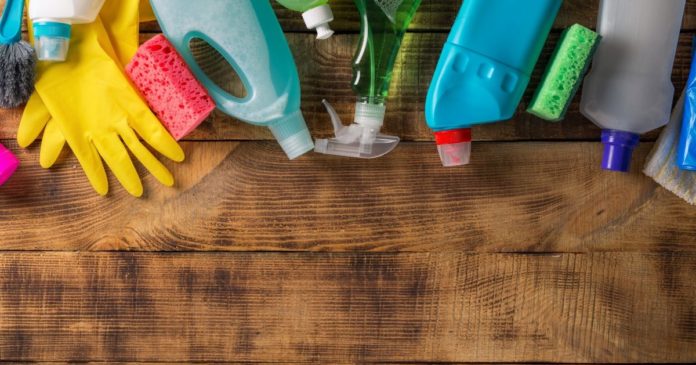


![11 Maltese Online stores that deliver furniture, furnishings & home decor [20/08]](https://blog.house.mt/wp-content/uploads/2020/08/1-12-218x150.png)